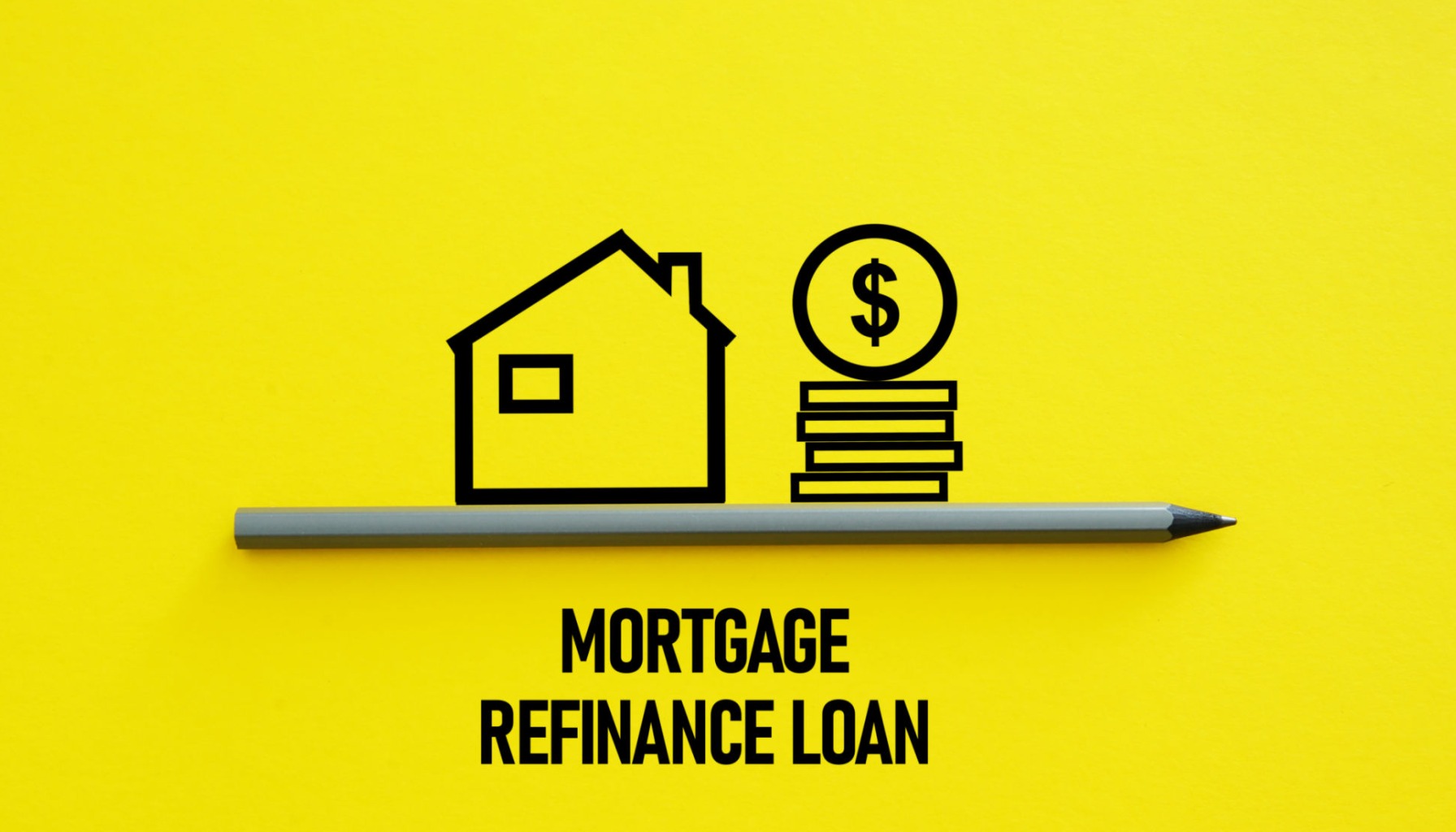The big takeaway today is that the national average 30-year fixed refinance rate is holding firm at 6.87% according to Zillow. This means that if you were thinking about refinancing your mortgage to a new 30-year loan, today's rate is the same as it was last week. While this isn't a rate hike, it also doesn't signal a continued downward trend, so understanding where things stand is important for making good decisions.
It's my experience that after a period of movement, rates often find a bit of a pause. This stability, while not a huge drop, can still be an opportunity for many homeowners. Many of you out there likely have a mortgage rate higher than this 6.87%, and even holding steady can be a good time to explore if refinancing makes sense for your financial goals. For those looking at shorter loan terms, the 15-year fixed refinance rate is also sitting steady at 5.83%, and the 5-year ARM refinance rate is at 7.29%, also unchanged from what we saw last week. So, across the board, the refinance market is showing a period of calm.
Mortgage Rates Today, November 5: 30-Year Refinance Rate Remains Unchanged
Why This Stability Matters
This stable environment for mortgage rates isn't happening in a vacuum. It’s a direct reflection of broader economic signals and the actions (or anticipated actions) of major financial players, like the Federal Reserve. The Fed recently made their second consecutive cut to their benchmark interest rate, moving it down by 0.25 percentage points. This shows they’re watching the economy closely and are concerned about signs of it slowing down, especially when it comes to jobs.
However, what’s fascinating – and sometimes a little nerve-wracking for markets – is the “cautious guidance” that has accompanied these cuts. Fed Chair Powell has made it clear that another rate cut in December isn't a sure thing. This kind of uncertainty can create a bit of a tug-of-war in financial markets, and we’re seeing that play out.
Decoding the Fed's Moves and Market Reactions
The Federal Reserve's decision-making process is like a complex puzzle with many pieces. On one hand, you have strong evidence of a weakening labor market, which is a major driver for rate cuts. But on the other hand, inflation is still a concern; prices haven’t quite settled down to their 2% target yet. This creates a tricky balancing act for the Fed – they want to support the economy, but they also don’t want to make inflation worse.
Adding to the complexity are disruptions caused by things like the federal government shutdown, which has made it harder to get clear economic data. This “information gap” makes future decisions even more unpredictable.
And how does this all affect us? Well, the markets are incredibly sensitive to what the Fed says. When Chair Powell hinted that more rate cuts aren't guaranteed, we saw immediate reactions. The 10-year Treasury yield, which is a key indicator for mortgage rates, has ticked up a bit, currently hovering around 4.08%. This uptick suggests that mortgage rates might not continue their recent downward trend and could instead stabilize in the mid-6% range. It highlights how important it is to watch economic reports closely in the coming weeks.
I’ve seen this many times in my years following the mortgage market: when there’s a hint of fewer rate cuts to come, mortgage rates tend to firm up. It’s the market anticipating future borrowing costs.
Refinancing: Is Now the Right Time for You?
So, with the 30-year refinance rate standing at 6.87%, what does this mean for you? It really depends on your personal financial situation and your original mortgage rate.
- If your current rate is higher than 6.87%: You are likely in a good position to consider refinancing. Even without a further drop, locking in a rate below what you currently have can lead to significant savings over the life of your loan.
- Window of Opportunity: While the best borrowing rates of the cycle might have passed, this stable point still offers a valuable opportunity. The market is indicating potential future increases, so locking in a rate now could be wise before that happens.
- Shorter Terms vs. Longer Terms:
- The 15-year fixed refinance rate at 5.83% is significantly lower. If you can afford the higher monthly payments, a 15-year loan could save you a substantial amount of money in interest over time and help you pay off your home faster.
- The 5-year ARM refinance rate at 7.29% is higher than the fixed rates. ARMs can be attractive if you plan to move or refinance again within the initial fixed period, but the current rate makes the stability of a 30-year fixed look more appealing for most.
What Influences Your Specific Rate?
It's crucial to remember that the national average is just that – an average. Your actual refinance rate will depend on several personal factors. Lenders look at these things very closely:
- Your Credit Score: This is probably the biggest factor. A higher credit score signals to lenders that you're a lower risk, which usually translates to a better interest rate. If your credit score has improved since you last took out a mortgage, you might qualify for an even lower rate than the national average.
- Your Debt-to-Income Ratio (DTI): This is a calculation of how much of your monthly income goes toward paying off debts. Lenders prefer to see a lower DTI, as it indicates you have more disposable income to handle your mortgage payments.
- Loan-to-Value Ratio (LTV): This compares the amount you want to borrow to the value of your home. A lower LTV (meaning you have more equity or are putting down a larger down payment) is generally seen as less risky and can lead to better rates.
- The Type of Loan: As we've seen, 30-year fixed, 15-year fixed, and ARMs all have different rate structures.
Recommended Read:
30-Year Fixed Refinance Rate Trends – November 4, 2025
Looking Ahead: What to Watch For
As we head into the rest of November and approach December, several key factors will be on my radar, and I think they’re important for you to track too:
- Post-Shutdown Economic Data: Now that the government shutdown is over, we'll be seeing a flood of economic reports. These will give us a clearer picture of the economy's health and will be critical for the Fed's December decision. Pay attention to inflation numbers and job market reports.
- Labor Market Trends: If we see continued signs of jobs weakening, it will put more pressure on the Fed to consider further rate cuts down the line.
- Inflation Readings: If inflation starts to tick up again, it could put a halt to any easing cycle the Fed is trying to implement.
- Market Technicals: The Fed is also ending its program of reducing its asset holdings (“quantitative tightening”) starting December 1st. This could provide some underlying support to mortgage markets, potentially capping any significant rate increases.
For Buyers and Sellers
While this article focuses on refinancing, it's worth a brief mention of what this environment means for the broader housing market. For buyers, the current conditions remain more favorable than they were at the peak of last year's market. However, the rapid improvements might be pausing temporarily. For sellers, housing demand is expected to stay solid, though like with buying, the pace of activity could moderate a bit.
My Takeaway
Today, the 30-year fixed refinance rate at 6.87% isn't moving, and that stability is my main focus. It’s a moment to pause and assess. If you’ve been waiting for rates to drop dramatically, it seems those days might be on hold for now. However, if your current mortgage rate is higher than 6.87%, then this stable rate is an invitation to explore your options. Don't overlook the possibility of significant savings, even if there isn't a steep drop happening today.
“Invest Smart — Build Long-Term Wealth Through Real Estate”
Norada's team can guide you through current market dynamics and help you position your investments wisely—whether you're looking to reduce rates, pull out equity, or expand your portfolio.
Work with us to identify proven, cash-flowing markets and diversify your portfolio while borrowing costs remain favorable.
HOT NEW TURNKEY DEALS JUST LISTED!
Speak with a seasoned Norada investment counselor today (No Obligation):
(800) 611-3060
Recommended Read:
- When You Refinance a Mortgage Do the 30 Years Start Over?
- Should You Refinance as Mortgage Rates Reach Lowest Level in Over a Year?
- NAR Predicts 6% Mortgage Rates in 2025 Will Boost Housing Market
- Mortgage Rates Predictions for 2025: Expert Forecast
- Half of Recent Home Buyers Got Mortgage Rates Below 5%
- Mortgage Rates Need to Drop by 2% Before Buying Spree Begins
- Will Mortgage Rates Ever Be 3% Again: Future Outlook
- Mortgage Rates Predictions for Next 2 Years
- Mortgage Rate Predictions for Next 5 Years
- Mortgage Rate Predictions for 2025: Expert Forecast



